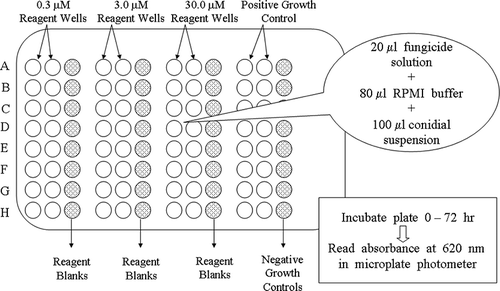Figures & data
FIGURE 1 Experimental set up for 96-well plate microtiter assay in which columns contain 0, 0.3, 3.0, and 30.0 concentrations of test compounds. Rows (A–H) contain fungicides and internal standards for comparison and validation. Sixteen positive growth control wells are used to establish the fungal growth mean and eight negative control wells without inoculum and test compounds serve as sterility checks. Blank reagent well indicated with stippling are used to negate the effects that colored molecules have on the turbidity measurements at 620 nM.
